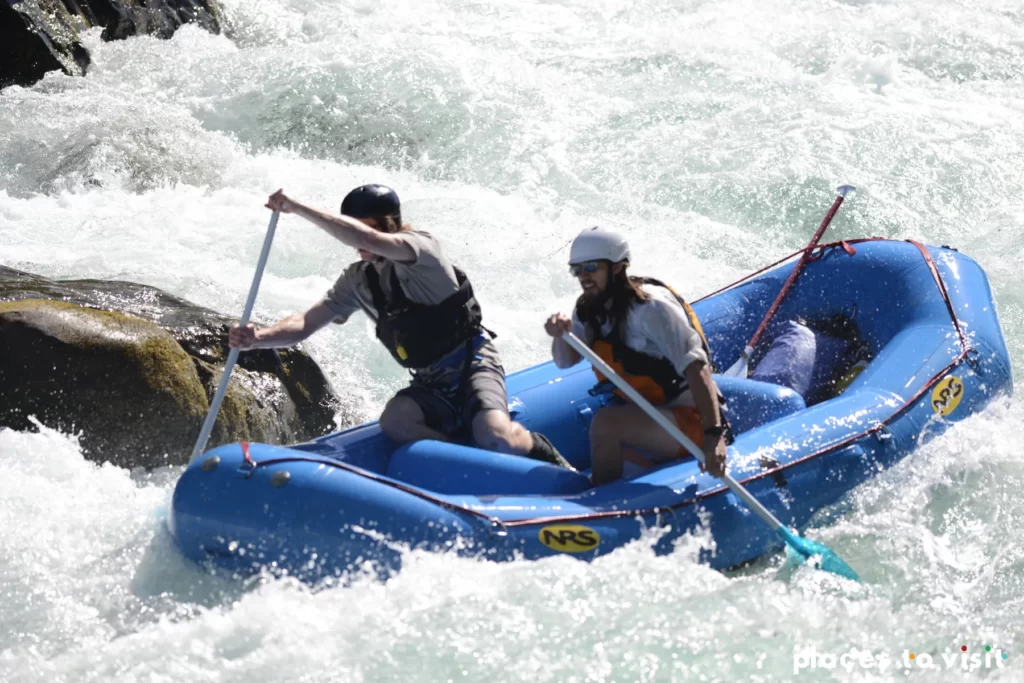Rafting is a fun and adventurous activity that involves navigating through water bodies, such as rivers or streams, in an inflatable raft. Apart from being a thrilling activity, rafting has numerous benefits for both physical and mental health. In this article, we will explore the various advantages of rafting and why you should consider adding it to your list of recreational activities.
Physical Health Benefits of Rafting
Cardiovascular Health

Rafting involves paddling against the current of a river, which provides an excellent cardiovascular workout. This type of activity increases your heart rate, which improves blood circulation throughout the body. With regular rafting, you can significantly reduce the risk of developing heart-related diseases such as high blood pressure, stroke, and heart attacks.
Strength Training

Paddling a raft requires a considerable amount of upper body strength. As you navigate through the river, you will be engaging your core, shoulders, arms, and back muscles. Over time, this will help to build your muscular endurance and strength.
Improved Balance and Coordination

Rafting involves working together as a team to navigate the raft through the river. It requires you to have excellent balance and coordination skills to stay afloat and navigate through rapids successfully. This activity will help to improve your balance and coordination skills, which can be transferred to other areas of your life.
Low Impact Exercise

Rafting is a low-impact exercise, which means that it is easy on your joints. Unlike other high-impact exercises such as running or jumping, rafting puts less strain on your knees and ankles. This makes it an ideal activity for people who suffer from joint-related problems.
Mental Health Benefits of Rafting
Stress Relief

Rafting is an excellent way to relieve stress and tension. The sound of rushing water, the fresh air, and the breathtaking scenery can help to calm your mind and reduce stress levels. Additionally, engaging in an adventurous activity such as rafting can release endorphins, which are natural mood-boosters.
Boosts Confidence and Self-Esteem

Rafting can be a challenging activity, especially when navigating through rough waters. Successfully navigating through rapids and overcoming obstacles can give you a sense of accomplishment and boost your confidence and self-esteem.
Enhances Problem-Solving Skills

Rafting requires you to think on your feet and come up with solutions quickly. When faced with unexpected obstacles such as rocks or rapids, you need to work together as a team to find a solution. This type of problem-solving can be transferred to other areas of your life and enhance your ability to solve problems effectively.
Promotes Socialization

Rafting is a team activity that requires cooperation and communication. You will be working together with a group of people to navigate the river successfully. This type of activity promotes socialization and helps to build stronger bonds with each other. Rafting with friends or family can be a great bonding experience, and it is also an excellent way to make new friends.
Safety Precautions for Rafting
Although rafting can be a fun and exciting activity, it is essential to take safety precautions to prevent accidents and injuries. Some safety precautions to keep in mind while rafting include wearing a personal floatation device (PFD), wearing a helmet, listening to the guide’s instructions, and staying hydrated.
It is also important to make sure that you have the right equipment and that it is in good condition. You should always check your raft, paddles, and safety gear before setting out on a trip.
Conclusion
In conclusion, rafting is an excellent way to improve your physical and mental health. It provides numerous benefits, including cardiovascular health, strength training, improved balance and coordination, stress relief, boosted confidence and self-esteem, problem-solving skills, and socialization. However, it is essential to take the necessary safety precautions to prevent accidents and injuries.
If you’re looking for a fun and adventurous way to stay active and improve your well-being, rafting is an activity you should consider adding to your list of recreational activities.
FAQs
What is the best time of year to go rafting?
The best time to go rafting depends on the location and weather conditions. In general, spring and summer months are the best for rafting.
How long does a typical rafting trip last?
The length of a rafting trip varies depending on the location and the type of trip. Some trips can last for a few hours, while others can last for several days.
What should I wear when going rafting?
You should wear comfortable, waterproof clothing and shoes with good grip. It is also essential to wear a personal floatation device (PFD) and a helmet.
Can I go rafting if I don’t know how to swim?
Yes, you can still go rafting even if you don’t know how to swim. However, it is important to wear a personal floatation device (PFD) and to stay close to the raft.
Is rafting suitable for people with medical conditions?
It depends on the type of medical condition. If you have a medical condition, it is important to consult with your doctor before going rafting to determine if it is safe for you to participate.





Leave a reply